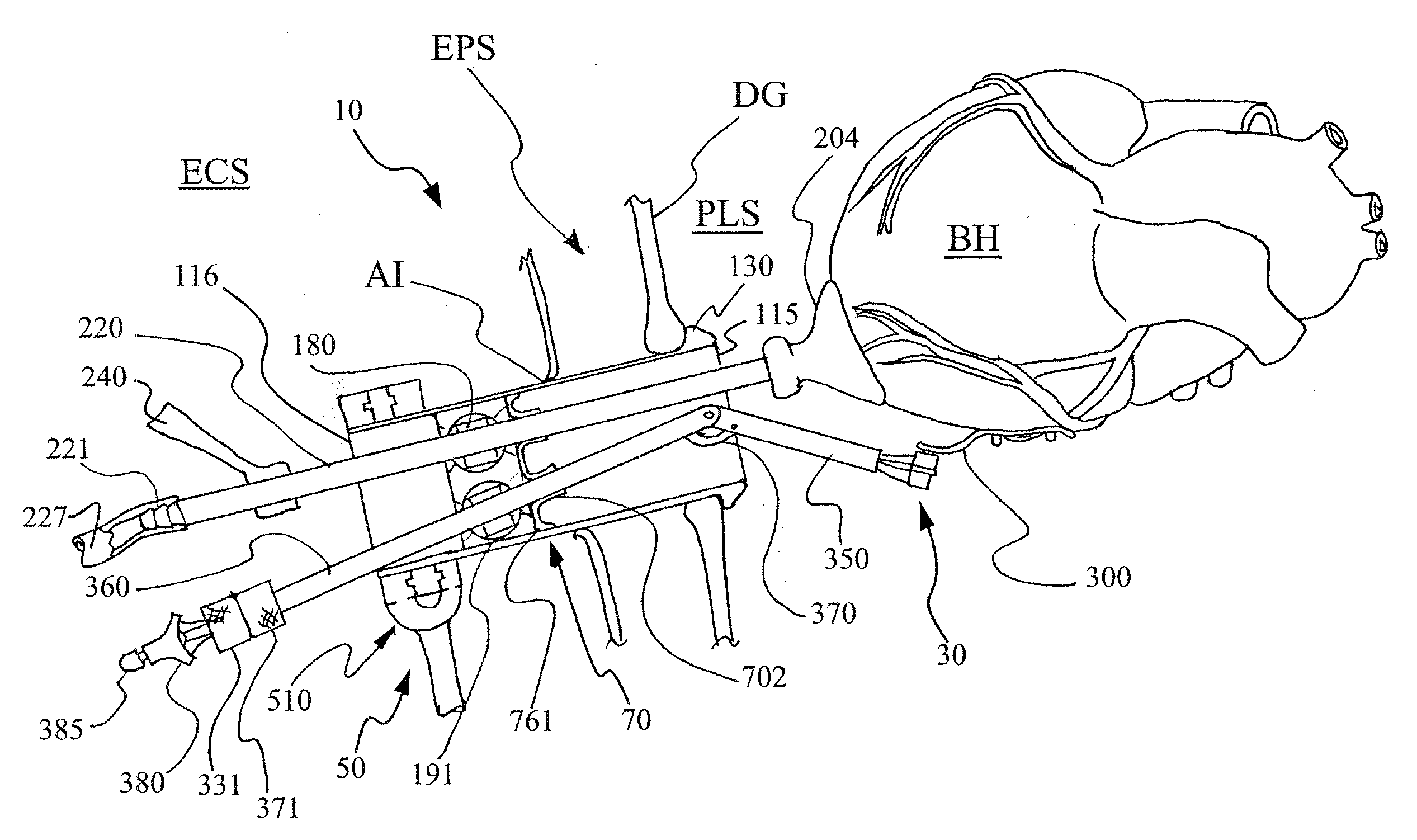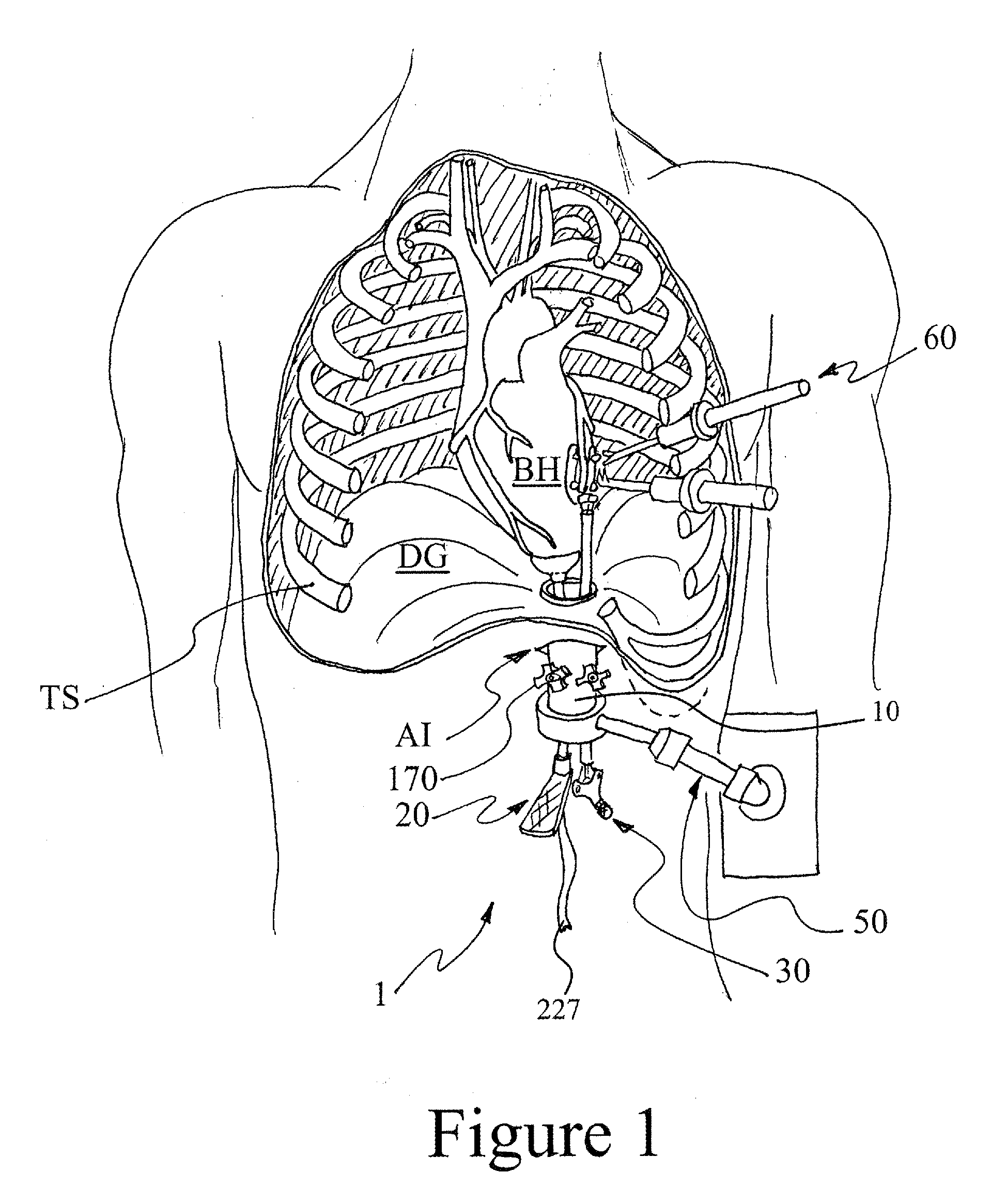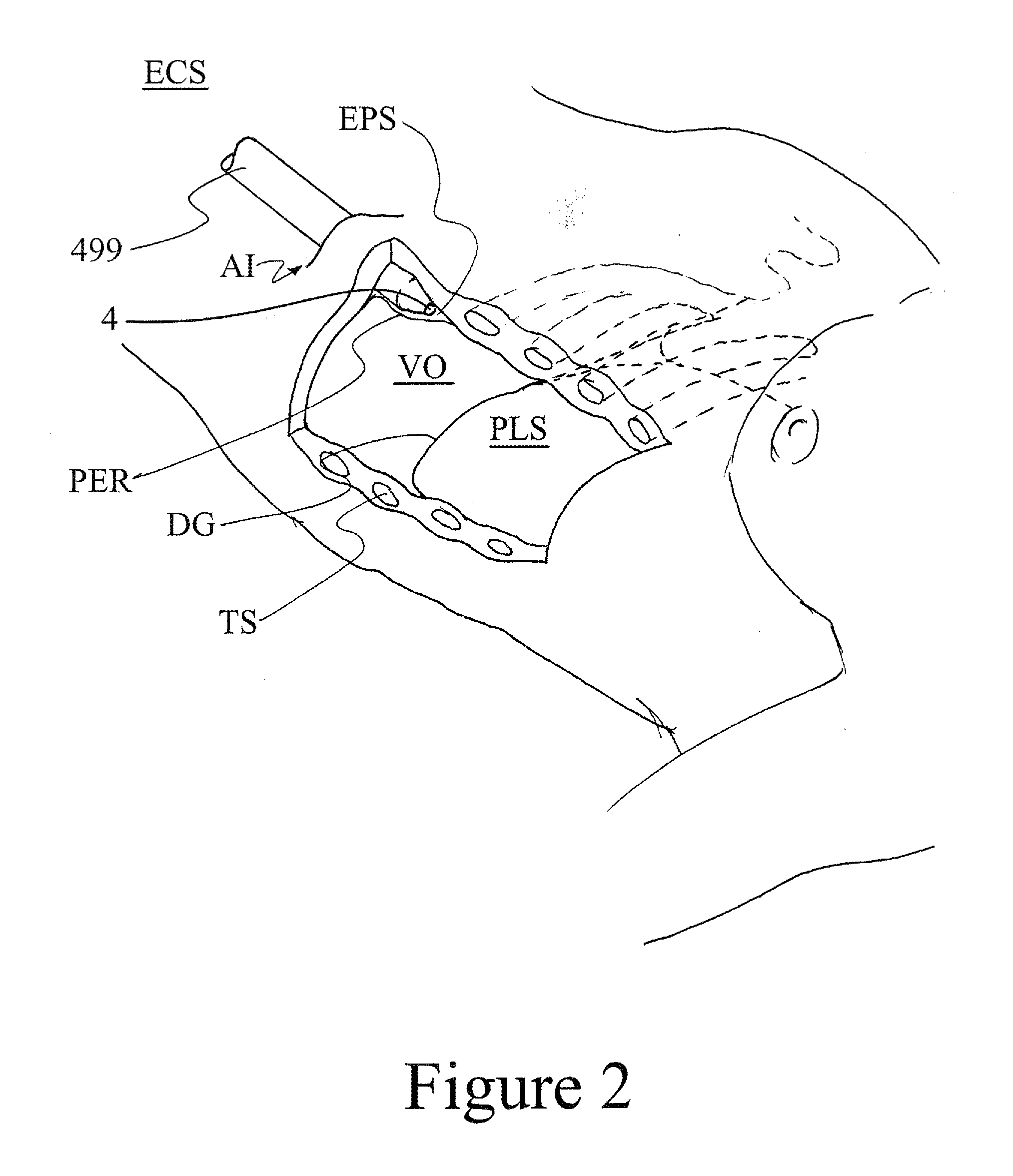Surgical apparatus and method for performing transabdominal cardiac surgery
a transabdominal and cardiac surgery technology, applied in the field of surgical equipment and methods, can solve the problems of more invasive, large initial procedure cost of traditional cabg, temporary disturbance of the respiratory mechanism, etc., and achieve the effect of less invasive for the patien
- Summary
- Abstract
- Description
- Claims
- Application Information
AI Technical Summary
Benefits of technology
Problems solved by technology
Method used
Image
Examples
first embodiment
[0103] By way of a general overview, FIG. 1 illustrates a surgical apparatus according to the present invention. The surgical apparatus is comprised of a surgical arm 50, an access cannula 10, a heart manipulator 20, and a coronary stabilizer 30. Thoracoscopic surgical instruments 60 are provided with which the invention may be used. Said instruments 60 are deployed intercostally and tend to not require spreading of the patient's ribcage. Access cannula 10 is preferably deployed and engaged with the patient's diaphragm through diaphragm tissue retractor 40 in a manner described above.
[0104] Referring to FIG. 7, heart manipulator 20 and coronary stabilizer 30 are preferably engaged with access cannula 10 through an internal joint 190 (or alternatively 150, 170, or 180), in a manner already described with general reference to a surgical instrument.
[0105] Once the coarse adjustment has been performed and access cannula 10 has been secured to channel clamp 510 of surgical arm 50 in the...
second embodiment
[0142] By way of a general overview, FIG. 20 illustrates a surgical apparatus 2 according to the present invention. The surgical apparatus 2 is comprised of a surgical arm 50, an access cannula 10, a heart manipulator 20, a coronary stabilizer 30, and a variety of endoscopic instruments 90. Endoscopic instruments 90 represent a variety of surgical instruments well-suited to perform a surgical intervention on a beating heart while deployed through access cannula 10. At least a portion of each of the surgical instruments comprising endoscopic instruments 90 is able to engage access cannula 10 through an internal joint such as internal joint 180. Some of the surgical instruments comprising endoscopic instruments 90 may also be deployed through access cannula 10 during a part of a surgical procedure without being engaged in said internal joint 180. Endoscopic instruments 90 are generally deployed while heart manipulator 20 is engaged with a beating heart and while heart manipulator 20 i...
PUM
 Login to View More
Login to View More Abstract
Description
Claims
Application Information
 Login to View More
Login to View More - R&D
- Intellectual Property
- Life Sciences
- Materials
- Tech Scout
- Unparalleled Data Quality
- Higher Quality Content
- 60% Fewer Hallucinations
Browse by: Latest US Patents, China's latest patents, Technical Efficacy Thesaurus, Application Domain, Technology Topic, Popular Technical Reports.
© 2025 PatSnap. All rights reserved.Legal|Privacy policy|Modern Slavery Act Transparency Statement|Sitemap|About US| Contact US: help@patsnap.com



